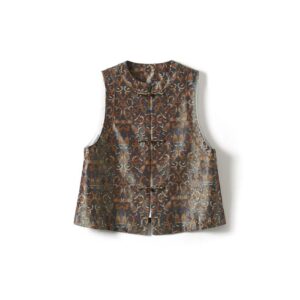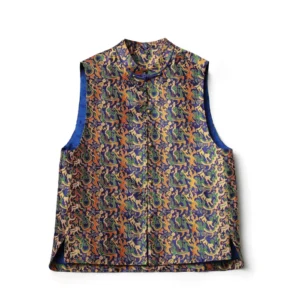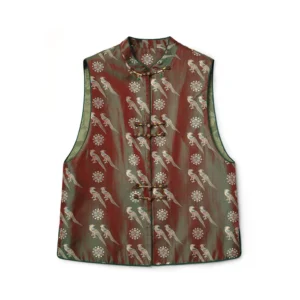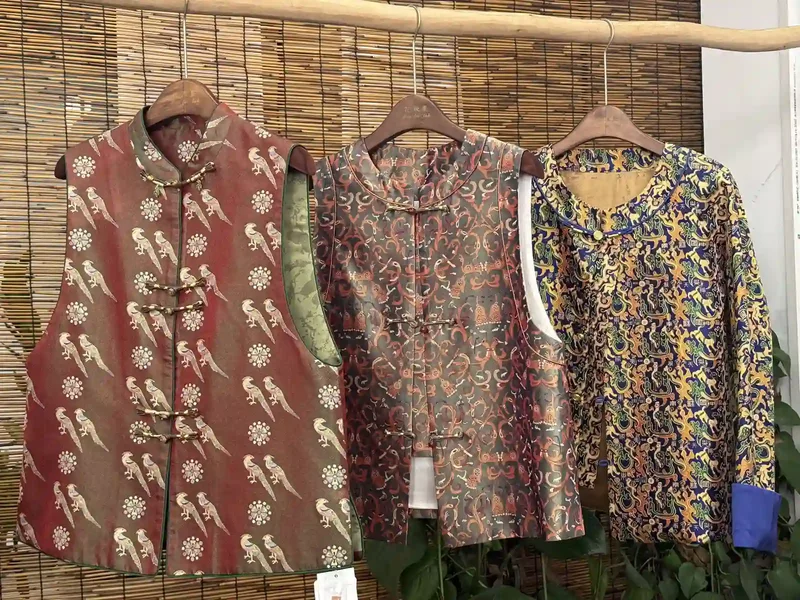
Shu Brocade
Shu brocade, also known as Sichuan embroidery, is a specialty of Chengdu, Sichuan Province. In 2006, it was listed in the first batch of China's national intangible cultural heritage and is considered the "mother of Chinese brocade."
"Shu" is the ancient name for Sichuan, and "Brocade" refers to the colorful jacquard silk fabric. It is named after its place of origin, hence the name Shu brocade.
Shu brocade is a jacquard fabric woven using silk thread dyed in five primary colors (red, yellow, green, blue, and black).
The pattern is created using warp threads, then colored stripes are added to create or enhance the pattern, using a combination of geometric patterns and decorative motifs.

Craftsmanship, Value and Heritage
Shu brocade, passed down through generations of artisans over two thousand years, holds its value in its craftsmanship.
To this day, due to its complex production process, many steps cannot be replaced by machines and must be completed by hand.
Shu brocade is beautiful, with vibrant colors and rich designs, imbued with auspicious meanings and rich in folk customs and regional characteristics.
Looking to buy fabric?
Customization and Innovation
Shu brocade Historical Development
| Period | Development | Key Events/Characteristics |
| Spring and Autumn & Warring States | Emergence of Shu Brocade with advanced sericulture in Sichuan (ancient Shu). | While other regions produced brocade, Shu’s techniques eventually surpassed and spread nationwide. |
| Han Dynasty | Golden age of Shu Brocade, becoming a luxury commodity. | “Five Stars Rise in the East” brocade armguard discovered (national treasure). World’s earliest pattern looms excavated from Laoguanshan Han Tomb. |
| Three Kingdoms | Became Shu Kingdom’s economic pillar. | Zhuge Liang stated: “Our military funds depend entirely on Shu Brocade!” (Recorded in his works). |
| Tang Dynasty | Technical pinnacle with diverse patterns, exported globally. | Featured dragon-phoenix, lion, and lotus motifs. Exported to Persia and Japan – the “Hermès” of its day. |
| Song & Yuan Dynasties | Official “Chengdu Brocade Institute” established for standardized production. | “Shu Brocade Manual” from Yuan Dynasty documented various exquisite designs. |
| Ming & Qing Dynasties | Declined during late Ming wars, revived with innovations in Qing. | Qing developed signature “Rainbow Stripe” and “Moonbeam” brocades with gradient coloring. |
| Modern Era | Recognized as national intangible cultural heritage. | Chengdu Shu Brocade Museum preserves traditional techniques while adapting to modern fashion. |
Shu brocade Craftsmanship
1. Materials
Shu brocade is primarily made of dyed pure mulberry silk thread.
Dyeing the dyed silk thread primarily relies on natural plant pigments, resulting in Shu brocade’s vibrant, rich, and durable colors.
2. Craftsmanship
Shu brocade weaving techniques are divided into two main categories: warp and weft.
Warp brocade uses warp threads for pattern creation, while weft brocade uses weft threads for pattern creation.
From pattern design and weaving techniques to weaving and weaving, Shu brocade continues its ancient traditions.
Later, the advent of shuttle looms replaced traditional brocade weaving, but the techniques remain largely the same.
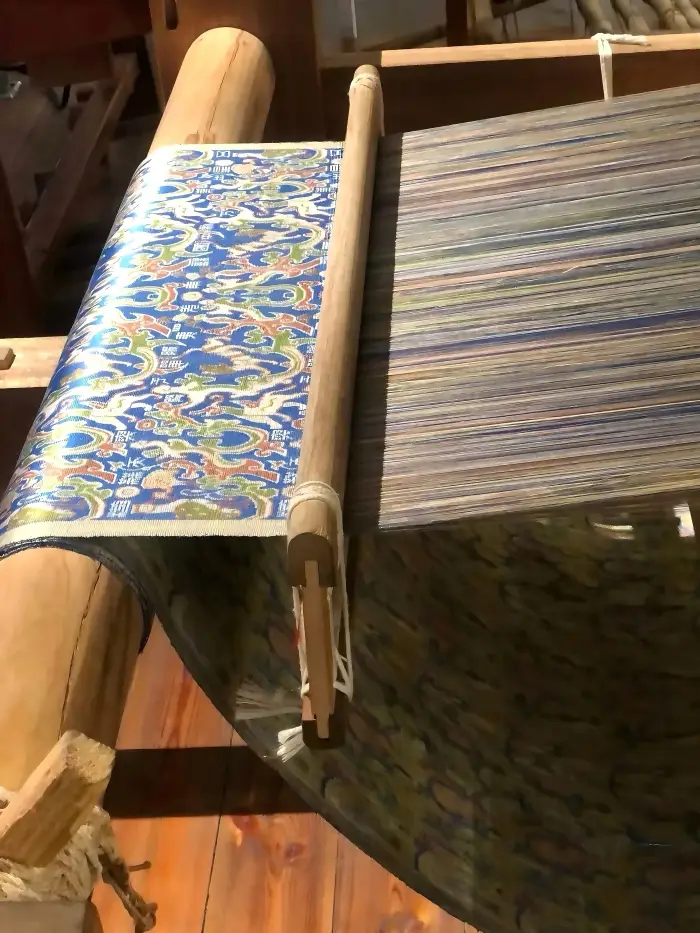
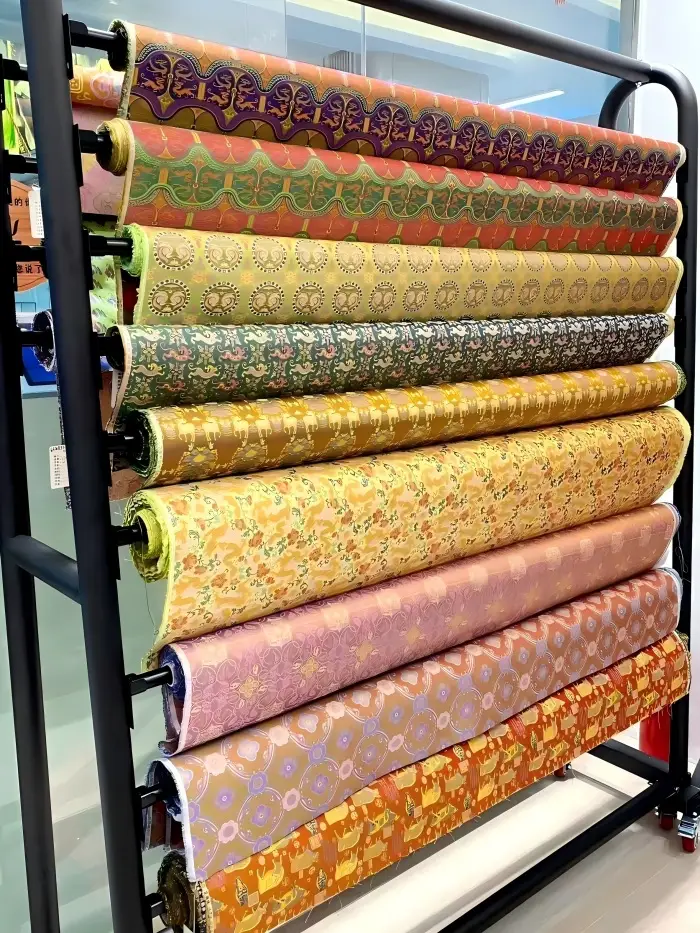
Shu Brocade Varieties
Shu Brocade has numerous varieties, including common traditional varieties such as Rain Silk Brocade, Scattered Flower Brocade, Huanhua Brocade, Minzu Brocade, Square Brocade, and Colorful Halo Brocade.
Rain Silk Brocade: The brocade surface is composed of multicolored warp threads. The white and colored warp threads vary in thickness and transition, creating a rich, rain-like pattern. Various beautiful patterns are sewn onto this surface, blending the colors and highlighting the patterns.
Scattered Flower Brocade: Characterized by patterns that cover the entire fabric, the fabric is interwoven with different single- or multi-colored patterns, creating a rich pattern with a strong local flavor.
Huanhua Brocade: Also known as “Flower Brocade,” it features plain and satin weaves. The patterns are designed based on the changing flow of streams, resulting in simple, elegant designs with a simple elegance.
Minzu Brocade: Woven with gold and silver threads inlaid into the brocade surface in various colors. Its characteristic feature is that the patterns on the brocade surface appear lustrous when illuminated by sunlight.
Fangfang brocade: This brocade features squares of varying colors and sizes, with elegant floral patterns woven into them using colored silk threads.
Caiyun brocade: This brocade features distinct layers of light and dark, with vibrant and colorful patterns, creating an elegant and luxurious look.
Shu brocade Cultural Value
Shu brocade, the most famous of China’s four famous brocades, is a signature Chengdu craft and a milestone in Chinese brocade production.
Traditional Shu brocade is woven using traditional Shu looms and traditional handcraftsmanship.
Its culture is imbued with the regional characteristics of Shu, showcasing the decorative style favored by its people and embodying their aesthetic tastes and appreciation.
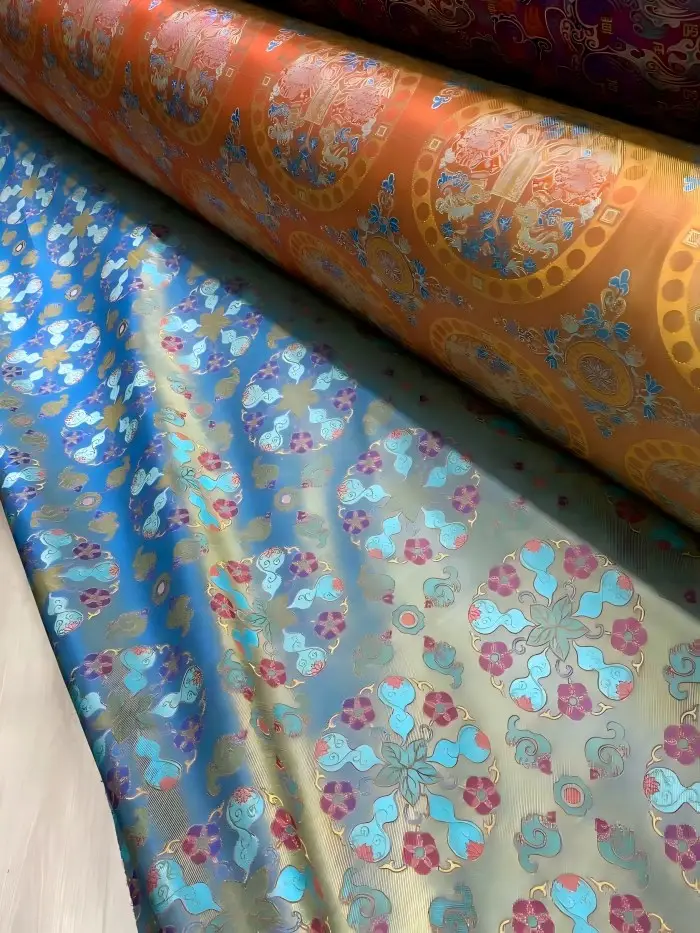
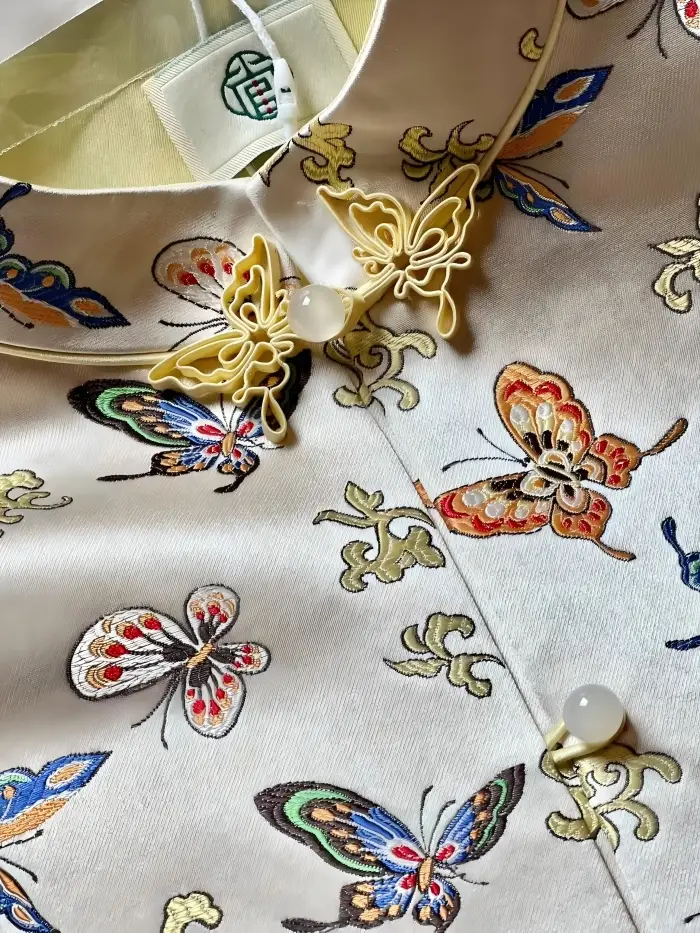
Shu brocade Modern Inheritance
Chengdu is known as the “Land of Abundance,” and the art of handwoven Shu brocade has been passed down for over 2,000 years.
During the Warring States Period, Shu brocade was an important trade item. It developed during the Qin and Han dynasties, matured during the Tang and Song dynasties, declined in the late Ming dynasty, and slowly recovered during the mid-to-late Qing dynasty.
Handlooms were gradually replaced by modern looms, leading to a decline and decline. Today, authentic Shu brocade has become even more refined.
Shu brocade boasts a long history and profound influence, spreading widely. It reached India, Myanmar, Vietnam, and Laos through the Southern Silk Road, and spread to South Asia through the Northern Silk Road, extending to the Western Regions and Europe.
Throughout history, Shu brocade has been a pillar of Sichuan’s economy.
Throughout the Silk Road, Chengdu Shu brocade reached international markets, facilitating economic and cultural exchanges between China and other civilized regions around the world.

